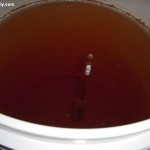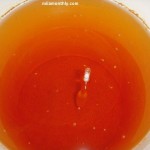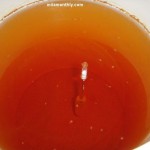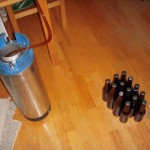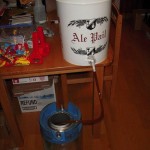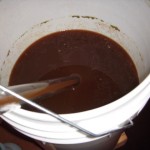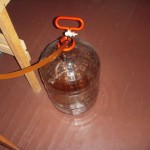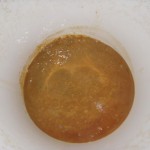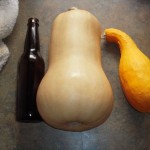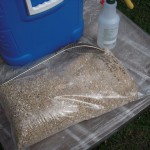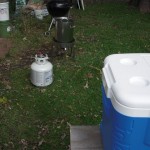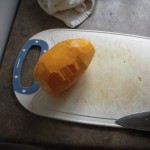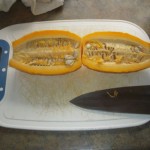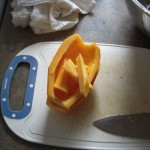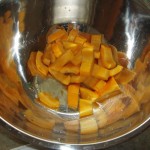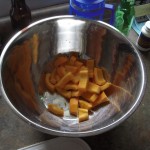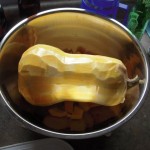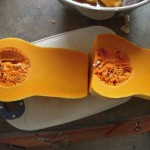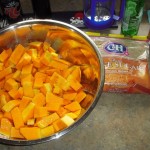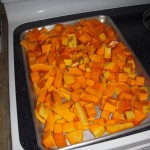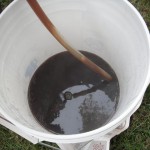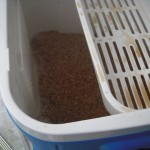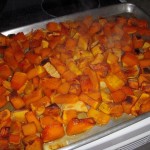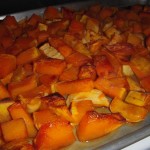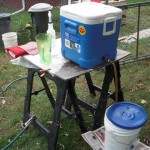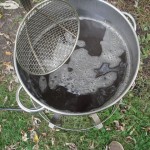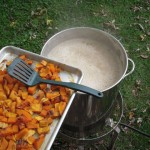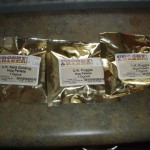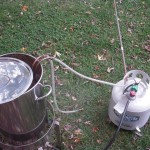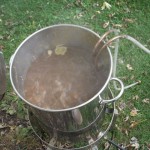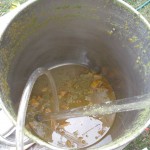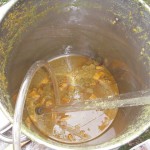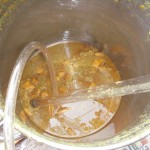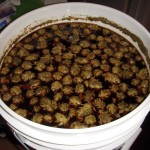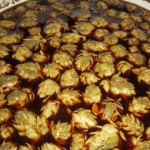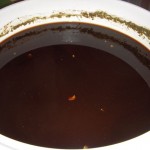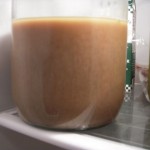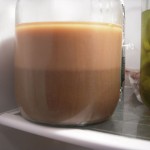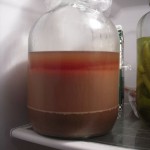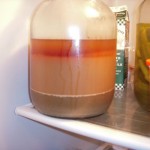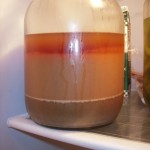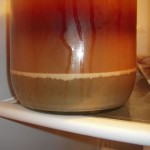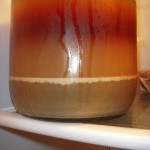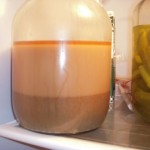There is no point in rehashing the post from 10 days ago about the Pumpkin Ale. So then lets dive in head first into the nitty gritty from this brew session.
Last Saturday morning I headed out to the farmer’s market to pick up a butternut squash, after a quick walk around to gauge what was available for purchase. I found a vendor that had a 5.5 lb butternut for $2.00. Consider it sold! Now with the butternut in my possession, it time for all the prep work.
I already had a yellow neck squash from the end of season harvest in the garden. I had no idea what to do with, so I though that I might as well use it along with the butternut. After prepping both squash (peel, de-seed & dice), I tossed all the squash with 1/4 cup of light C & H brown sugar (4oz by weight), before putting it under the broiler. It turned out to be just enough sugar to coat everything evenly, but not so much that I had leftover sugar in the bottom of the mixing bowl.
I roasted the butternut/yellow squash under a low, then high broiler for about 90 minutes. After about 45 mins of no broiling action under low, I cranked it up to high so that it would actually roast. Now with that bit out of the way, here is the complete recipe:
Jack-off Ale Recipe (Powers Brewery format at the bottom)
6 lbs – Pale Malt (6 row) USA
2 lbs – Munich Malt – 10L
.25 lb – Chocolate Malt (UK)
1 lb – Caramel/Crystal Malt 20L
1 lb – Flaked Barley
.25 lb – Light C&H Brown Sugar
Wyeast American Ale – 1056
~5 lbs of cleaned Butternut squash – 75 mins
Fuggles – 1oz pellets- 4% AA – 60 mins
East Kent Golding – 1oz pellets- 5% AA – 15 mins
Fuggles – 1oz pellets- 4% AA – 3 mins
Spices added during final 30 mins of boil:
2 tsp – Nutmeg
2 tsp – Cinnamon
1 tsp – Allspice
Other info: Mashed for about 90 minutes at 150-154F with 3 gallons of water; batch sparged with 1.5 gallons of boiling water & 3.5 gallons of 170F water; First running was 2.75 gal and the second/final running was 3.75 gal; 90 minute boil; 10 days in the primary, OG 1.048 @ 80F.
I actually spent some time this go around, looking at how the Powers web page was set-up. And after making a couple of adjustments for the dead space in my mash/lauter tun, I basically hit the recipe right on the nose, both in OG and final volume, which is a first for me. Now for the hardest part…..waiting to drink the final product.
RO^Jack’off Ale^October 17, 2009^94^75^5^60^9^4^73^100^8.8^0.3^0.1^0.4^0.4^0.25^72^72^6^64^64^2^41^41^0.25^31^31^
1^7^7^1^0^0^0^0^0^0^0^0^0^45^45^14^1^60^0^1^12^1^15^0^1^14^1^3^0^1^0^0^0^0^1^0
^0^0^0^1^0^0^0^0^1^0^63^153^1.2^^^^~5 lbs of cleaned/diced/roasted Butternut squash, coated in
4 oz of Light C&H brown sugar; All spices added during final 30 mins of boil, Nutmeg 2 tsp, Cinnamon 2 tsp,
Allspice 1 tsp.^^^^^^^^^^^^^^^^^^^^5^5^5^0^0^0^0.1^
